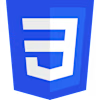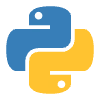Product Documentation for Synmax
Synmax Hyperion API Documentation
The SynMax API documentation was developed to enhance developer experience and facilitate ease of use through a comprehensive suite of features and functionalities. The documentation was built with Python and Sphinx for documentation generation, and combines custom JavaScript and CSS for advanced styling and interactivity.
Key Features and Functionalities
Comprehensive Documentation Structure:
Introduction: Offers a concise overview of the Synmax API, highlighting its core features and the problems it aims to solve. This section helps potential users understand the value proposition of the API.
Tutorials: Includes a "Getting Started" guide to quickly onboard new users, as well as additional resources such as authentication guides and code snippets. This ensures that users can efficiently interact with the API right from the start.
Resources: Detailed documentation on API endpoints, parameters, and example responses. This core component aids developers in understanding how to effectively use the API.
Error Messages: Clear explanations of possible error codes and solutions to help users troubleshoot issues without frustration.
Terms of Use: Outlines legal agreements, usage constraints, and best practices to ensure proper consumption of the API services.
Examples: Provides practical use cases, including code examples and error handling, to illustrate the API’s functionality in real-world scenarios.
Interactive and User-Friendly Design:
Light/Dark Mode: A toggle feature allows users to switch between light and dark themes, enhancing readability and user comfort.
Glossary: A dedicated glossary page defines terms and concepts used throughout the documentation, making it easier for users to grasp technical jargon without being overwhelmed by long text blocks.
Documentation Types:
Reference Documentation: Detailed information on the structure, parameters, and return values of each API function or method.
Tutorials: Step-by-step instructions for achieving specific tasks with the API.
Conceptual Documentation: Explains how to build applications using the API and integrates multiple APIs into cohesive solutions.
Specification Compatibility:
The documentation aligns with popular specifications such as OpenAPI, RAML, and API Blueprint, ensuring compatibility with various tools and platforms.
Like this project
Posted Aug 27, 2024
Designed, developed, and wrote a user-centric, well-structured, and interactive documentation project for the Hyperion API.
Likes
0
Views
5
Clients

SynMax








